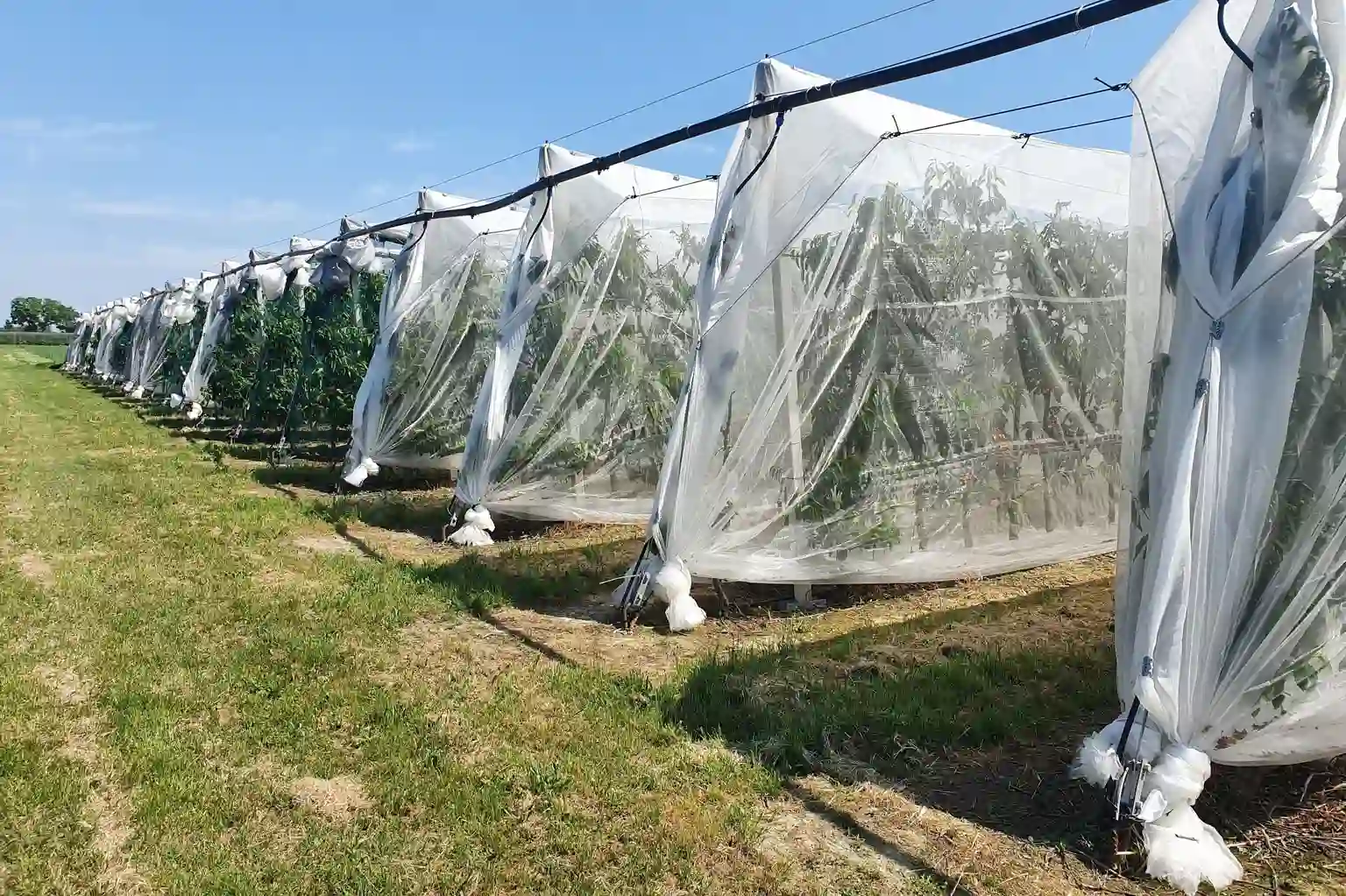A recent study conducted at Michigan State University (USA) analyzed various aspects of using fine-mesh netting in high-density sweet cherry orchards. The netting proved effective in protecting against key damage agents, with negligible side effects on fruit quality and orchard microclimate.
The research was carried out during 2023–2024 at two experimental stations in Michigan, where rows of sweet cherries covered with insect-exclusion netting were compared to uncovered control rows. Bird damage, the presence of Drosophila suzukii, the incidence of bacterial canker, and several fruit quality parameters were monitored. The netting used, with a 0.95 mm mesh, was installed two to four weeks before harvest, completely covering the canopy down to the ground.
Trial outcomes and findings
Results showed a significant reduction in bird damage in both trial years and a marked decrease in Drosophila suzukii presence in netted sections, both in terms of adults captured and larvae found in fruits, where pest populations were sufficient for analysis. Netting did not influence the occurrence of bacterial canker or fruit color but had positive effects on some quality parameters: netted treatments showed fewer cracked cherries and higher average fruit weight in one of the two years, although soluble solids content (°Brix) was slightly lower.
No significant differences in temperature or relative humidity were observed between treatments, indicating that netting did not substantially alter the orchard microclimate.

Agronomic and environmental impacts
From an agronomic standpoint, the results confirm that nets represent an effective physical protection method, especially in high-density “fruiting wall” systems, where the compact structure allows easier installation compared to traditional orchards. The simultaneous protection against birds and D. suzukii is a major advantage, reducing yield losses and potentially decreasing the use of chemical treatments, with both economic and environmental benefits.
Moreover, the absence of notable negative effects on fruit quality and microclimatic conditions makes this approach particularly appealing and compatible with the standards of fresh-market production.
Operational considerations and future directions
The study nevertheless highlights some operational challenges: the high initial cost of materials and labor, the need for strong anchoring systems, and regular monitoring to prevent wind damage or interference with field operations. Scaling up the system to larger commercial blocks therefore requires site-specific economic evaluation, considering the intensity of bird and insect pressure, infestation frequency, and management costs associated with the netting system.
Looking ahead, the researchers suggest expanding trials to full-scale orchards and identifying the optimal installation time, ideally shortly after fruit set and always after pollination. Netting could also integrate effectively with other low-impact pest management strategies, such as habitat management, contributing to a more resilient integrated pest management system.
In summary, the study demonstrates that the use of insect-exclusion nets in high-density cherry orchards can be an effective and a quality-oriented solution aligned with the goals of modern fruit production.
Source: Lindell, C. A., Rothwell, N. L., Collino, S., & Powers, K. (2025). Netting reduces bird damage and spotted wing Drosophila Drosophila suzukii, in high-density sweet cherries with few eCects on fruit quality. Crop Protection, 195, 107239. https://doi.org/10.1016/j.cropro.2025.107239
Image source: SL Fruit Service
Andrea Giovannini
University of Bologna (IT)
Cherry Times - All rights reserved













